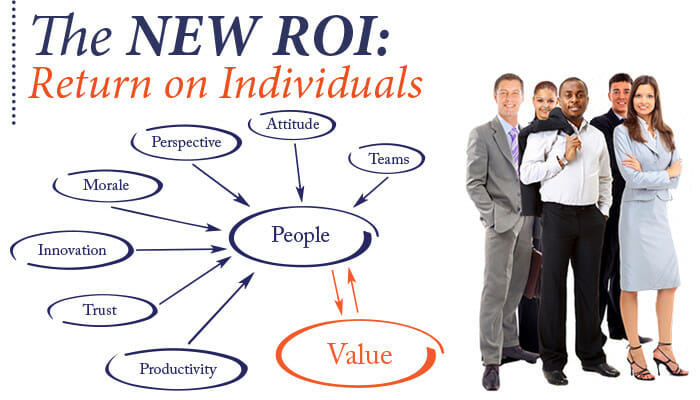 Note: This article is part of an occasional series dedicated to exploring the contribution of human capital assets (people!) to the valuation of a business. Welcome to The New ROI: Return on Individuals. Previous articles in the series can be found here.
Note: This article is part of an occasional series dedicated to exploring the contribution of human capital assets (people!) to the valuation of a business. Welcome to The New ROI: Return on Individuals. Previous articles in the series can be found here.
∼∼∼∼∼
The ability to bounce back from adversity is an important quality to possess. This is true in sports, in business, and in everyday life. Some people call this quality toughness; some call it grit.
Another term for this quality is resilience.
There are vast bodies of research that discuss the linkages between being resilient, being happy, and having less stress. This also creates a positive feedback loop where being happy and having less stress increases one’s resilience.
While resilience is not necessarily something you’re hard-wired with, it can be developed.
But what does it mean to be resilient?
To understand what it means to be resilient and how that quality translates to the world of business, workplace behavior expert and frequent contributor to the New ROI series, Dave Nast, and I spoke with renowned expert on resilience, Cheryl Hunter. The go-to expert on resilience, she works with companies, schools and individuals to help create change. She speaks extensively on the subject and has authored four books.
Hunter learned resilience from her own experience. While traveling abroad as a teenager, she was abducted by two criminals who held her captive, assaulted her, and left her for dead. She survived this life-changing event, turned her life around and dedicated herself to helping others to turn their lives and businesses around.
Henry Ford said, “Failure is only the opportunity more intelligently to begin again.” Hunter agrees, adding, “Resilient entrepreneurs and employees espouse the counter-intuitive premise that the key to success is none other than failure.”
” Resilience is the ability to not only begin again after adversity, but to do so with no loss of passion, purpose, or power.” – Cheryl Hunter
Hunter believes that there are “nuggets of gold” in every failure, and she encourages people to “hack your failures” by reverse-engineering them to understand your common themes and responses so you can learn from your past failures.
Why leaders should care about resilience
Boxer Mike Tyson once said, “Everyone has a plan until they get punched in the mouth.” How one responds to that punch requires resilience.
It’s been said that there are only two certainties in this world: death and taxes. I would add a third: change.
The speed of business as well as the speed of life continues to accelerate rapidly, and that creates changes in how we work, how we communicate, how we travel, and how we receive information, just to name a few. People need to be able to adapt and thrive amid constant change, so it doesn’t come at them like the punch in the face that takes them out.
Smart leaders understand that elements of psychology and behavioral dynamics can have a tremendous impact on an organization. For example, in previous articles we’ve demonstrated that organizations that foster a culture of trust earn higher returns and that happy people are more productive. Keeping people in these higher states of “best-self” really is good for business.
But Hunter warns that while a positive mindset is helpful, happiness and positivity alone aren’t the key to resilience: “Blind-faith positive thinking doesn’t serve anyone. That starts to verge upon magical thinking, which can actually make matters worse. As much as we don’t like the fact, things can and will go wrong, and occasionally bad things happen to good people.”
According to Hunter, “If you can anticipate what will predictably go wrong, you’ll be well-equipped to build a fail-safe plan to weather future failures.” She adds, “This is critical thinking and planning that we can do either as individuals or collectively in an organization, business, or enterprise.”
The bottom line on resilience
Leaders who would contemplate an investment in resilience training and education would naturally want to understand the measurable ROI. According to Hunter, the two biggest results are increased engagement and increased employee retention.
Employee turnover is not only disruptive, it’s expensive.
Regarding engagement, Gallup finds that two-thirds of U.S. workers were not engaged in their jobs. As Gallup notes, “They are also more likely to miss work and change jobs when new opportunities arise.”
Learning resilience takes training, coaching, planning, and intention for people to be able to think logically and objectively at a time when our emotions are telling us to run for the hills.
Just like a seasoned fighter who can get hit in the face and still respond, We all need to learn how to pivot, counter-punch, get off the ropes and get back to the center of the ring so we can try again and re-focus our eyes on the big picture.